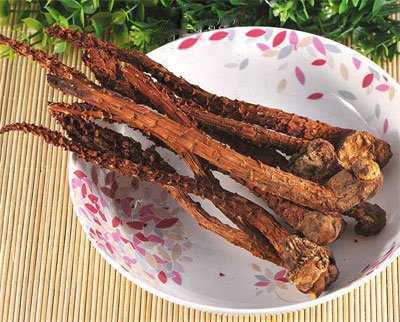Cuscuta (Dodder) Introduction
Dodder is a holoparasitic plant (a plant that takes all of its nutrition from another plant) that consists mainly of stem tissue that wraps around its host (See photo below). The parasite lacks a root system, has very small, scale leaves, and cannot make its own food through photosynthesis. Dodder is perhaps best known as a weedy plant that reduces crop yields and can spread plant diseases such as viruses. But dodder is also interesting because it represents an extreme outcome of plant evolution to be adapted for a parasitic lifestyle.

A young dodder plant growing on a tomato host.
Dodder growth is also unusual. It connects to its host using specialized structures called haustoria that develop at points of contact between the dodder stem coil and host stems or leaves. Once established, the dodder plant grows rapidly, branching profusely, with each new shoot seeking additional connections to host plants. In this way a single parasite can form a large mass extending beyond the original host and forming bridges between neighboring host plants of the same or different species. Dodders have relatively broad host ranges and are able to parasitize members of many different plant families, with the exception of grasses that do not support dodder growth.

A mass of dodder covering a tray of arabidopsis plants.
Dodder grows throughout the world and has picked up many colorful common names. In addition to "dodder", some are:
- angel's hair
- beggarweed
- devil's gut
- devil's hair
- devil's ringlet
- dodder of thyme
- goldthread
- hell bind
- hellweed
- hairweed
- love vine
- pull-down
- strangle tare
- strangleweed
- scaldweed
- tangle gut
- vampire vine
- witches' shoelaces
Dodder growth and behavior is best appreciated using time-lapse videos. This video of ours is avalable on YouTube:
Weediness:
Dodder is generally not a good companion for other plants! Although it usually does not kill it's hosts outright, dodder robs them of the food and water they need for growth and reproduction. Dodder can reduce or eliminate flowering of host crops, leading to great reductions in yield. Among the agricultural crops commonly impacted by dodder are legumes, tomato, potato, alfalfa, and cranberry. Although parasitic plants can be among the most challenging weeds to deal with, effective management practices are known (For example, see http://aces.nmsu.edu/pubs/_a/A615/welcome.html).
Medicinal uses:
Some parasitic plants like dodder and the broomrapes (below) have been used as traditional medicinal herbs for a long time in some Asian countries like China and South Korean. The Compendium of Materia Medica reports that these herbs can be used to treat constipation, impotence and infertility. Both dodder and the broomrape species have a "warm nature" and "sweet taste," based on the theory of traditional Chinese medicine, which can tonify or harmonize bodily systems. Their fleshy stem can also be used as an emollient, laxative and tonic.*
* We love parasitic plants, but make no claims about their health benefits to humans!

Broomrape (Orobanche) collected for medicinal use
(Photo credit: "Green Apple Health" - http://www.pingguolv.com/zy/gongxiao/5756.html)


